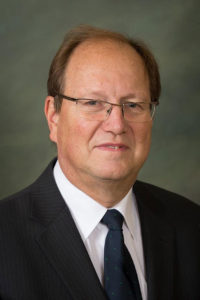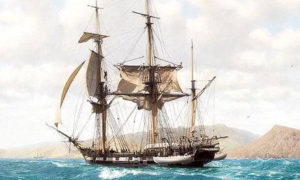Title: Understanding biodiversity through adaptive radiations
Presenters: Rosemary and Peter Grant, Princeton University
Hosts: Giri Athrey / Leif Andersson
Location: ILSB Auditorium

Title: Understanding biodiversity through adaptive radiations
Presenters: Rosemary and Peter Grant, Princeton University
Hosts: Giri Athrey / Leif Andersson
Location: ILSB Auditorium
VENI building, off Raymond Stotzer Parkway, College Station, Texas
Free and open to all
Visit the Web site for more information
Contact Anja Schulze for more information
Grab the flyer and join us!
Public speech by Prof. Leif Andersson titled: “The Darwin’s finches – iconic models for the evolution of biodiversity”
 Among the world’s most renowned scholars in the genomic and molecular study of domesticated animals, Dr. Leif Andersson—winner of the 2014 Wolf Prize in Agriculture – has carved a scientific niche by approaching farm animals as model organisms to illuminate fundamental biology. He has also developed an interest in Darwin’s finches from the Galápagos Archipelago and has led a team of scientists in the discovery of a new species living among the other Darwin’s finches but with an unusual origin – hybridization.
Among the world’s most renowned scholars in the genomic and molecular study of domesticated animals, Dr. Leif Andersson—winner of the 2014 Wolf Prize in Agriculture – has carved a scientific niche by approaching farm animals as model organisms to illuminate fundamental biology. He has also developed an interest in Darwin’s finches from the Galápagos Archipelago and has led a team of scientists in the discovery of a new species living among the other Darwin’s finches but with an unusual origin – hybridization.
Dr. Andersson earned his doctorate from the Swedish University of Agricultural Sciences in 1984. A member of the U.S. National Academy of Sciences and the Royal Swedish Academy of Sciences, he has received the Thureus Prize in Natural History and Medicine from the Royal Society of Sciences, the Linneus Prize in Zoology from the Royal Physiographic Society of Lund, the Hilda and Alfred Eriksson’s Prize in Medicine from the Royal Swedish Academy of Sciences, and the Olof Rudbeck Prize from Uppsala Medical Society. He has published more than 330 scientific articles, received six patents and filed applications for two more patents. He has mentored twenty-five students to doctorate or professional degrees.
Dr. Andersson has been a fellow of Hagler Institute for Advanced Study (HIAS) – one of the nationally and internationally renowned scholars invited by the Institute to come to the campus for extended stays to teach, conduct research, and interact with Texas A&M students and faculty. It is our privilege to have Professor Andersson speak to us on Darwin Day 2018.
Interactive Exhibits: ‘Voyage of the Beagle’
 As a young man, between 1831 and 1836, Charles Darwin traveled around the world aboard the HMS Beagle as a naturalist and companion to the captain, Robert FitzRoy. The Beagle made many stops, providing Darwin with opportunities to study the biology, geology and anthropology of the places he visited. The voyage was a formative experience and shaped his scientific thought.
As a young man, between 1831 and 1836, Charles Darwin traveled around the world aboard the HMS Beagle as a naturalist and companion to the captain, Robert FitzRoy. The Beagle made many stops, providing Darwin with opportunities to study the biology, geology and anthropology of the places he visited. The voyage was a formative experience and shaped his scientific thought.
Let’s celebrate Darwin Day by symbolically going on a voyage through Darwin’s life and accomplishments. Our booths will revisit some of the key locations of the Beagle, highlighting their unique aspects.
Interactive Exhibits: ‘The Sandwalk’
After following in the wake of the Beagle, visitors can then continue their voyage by exploring themes of biodiversity, natural selection and domestication, and see the various manifestations of modern biological research. They can also meet scientists from Texas A&M University who will showcase their research to the public.
Art exhibit and competition – ‘Endless Forms’
For Darwin Day 2018, we invite you to express what excites you about biology, or how you feel connected to the life and work of Charles Darwin. Your art can be could be your rendition of a favorite Darwin anecdote or quote, a depiction of your favorite life form, or your personal connection to nature. Entries are open to all age groups, and those from young, budding naturalists are particularly welcome and encouraged.
Specifications: Art work you plan to submit can be illustrations, paintings, photographs, origami, 3D pop-outs, or any other craft that can be stuck onto an exhibit board or wall (with pins or tape). Size of paper (or spatial footprint) may be anything in the range an A4 size sheet but not to exceed the size of construction paper (12”x18”). Our plan is to put up your creative works on poster stands and/or on walls (TBD based on venue). Art will be judged both by the attendees and by a panel. To help us anticipate the space needs for this exhibit, please email Anja Schulze about your intention to bring an entry to the competition.
Interactive exhibits: ‘Pat-a-gonia’
View and interact with critters from across the kingdoms of life.
The Rio Brazos Audubon Society’s Program presents:
Dr. Leif Andersson, Uppsala University, Sweden
In 2014, he was the co-recipient of the Wolf Prize in Agriculture from the Wolf Foundation for his work in genomic sequencing and analysis in domesticated and wild animals. He is currently visiting the College of Veterinary Medicine at TAMU.
Dr. Andersson’s talk is titled ”The evolution of Darwin’s finches and their beaks revealed by genome sequencing.” This talk is nicely-timed to correspond with Darwin Day on 12 February!
Where: Brazos Valley Museum of Natural History; 3232 Briarcrest Drive; Bryan, TX
When: Wednesday, February 11, 2015 at 6:30PM
Free and open to the public
The Rio Brazos Audubon Society’s Program presents:
Dr. Leif Andersson, Uppsala University, Sweden
In 2014, he was the co-recipient of the Wolf Prize in Agriculture from the Wolf Foundation for his work in genomic sequencing and analysis in domesticated and wild animals. He is currently visiting the College of Veterinary Medicine at TAMU.
Dr. Andersson’s talk is titled ”The evolution of Darwin’s finches and their beaks revealed by genome sequencing.” This talk is nicely-timed to correspond with Darwin Day on 12 February!
Where: Brazos Valley Museum of Natural History; 3232 Briarcrest Drive; Bryan, TX
When: Wednesday, February 11, 2015 at 6:30PM
Free and open to the public
© Ecology and Evolutionary Biology
